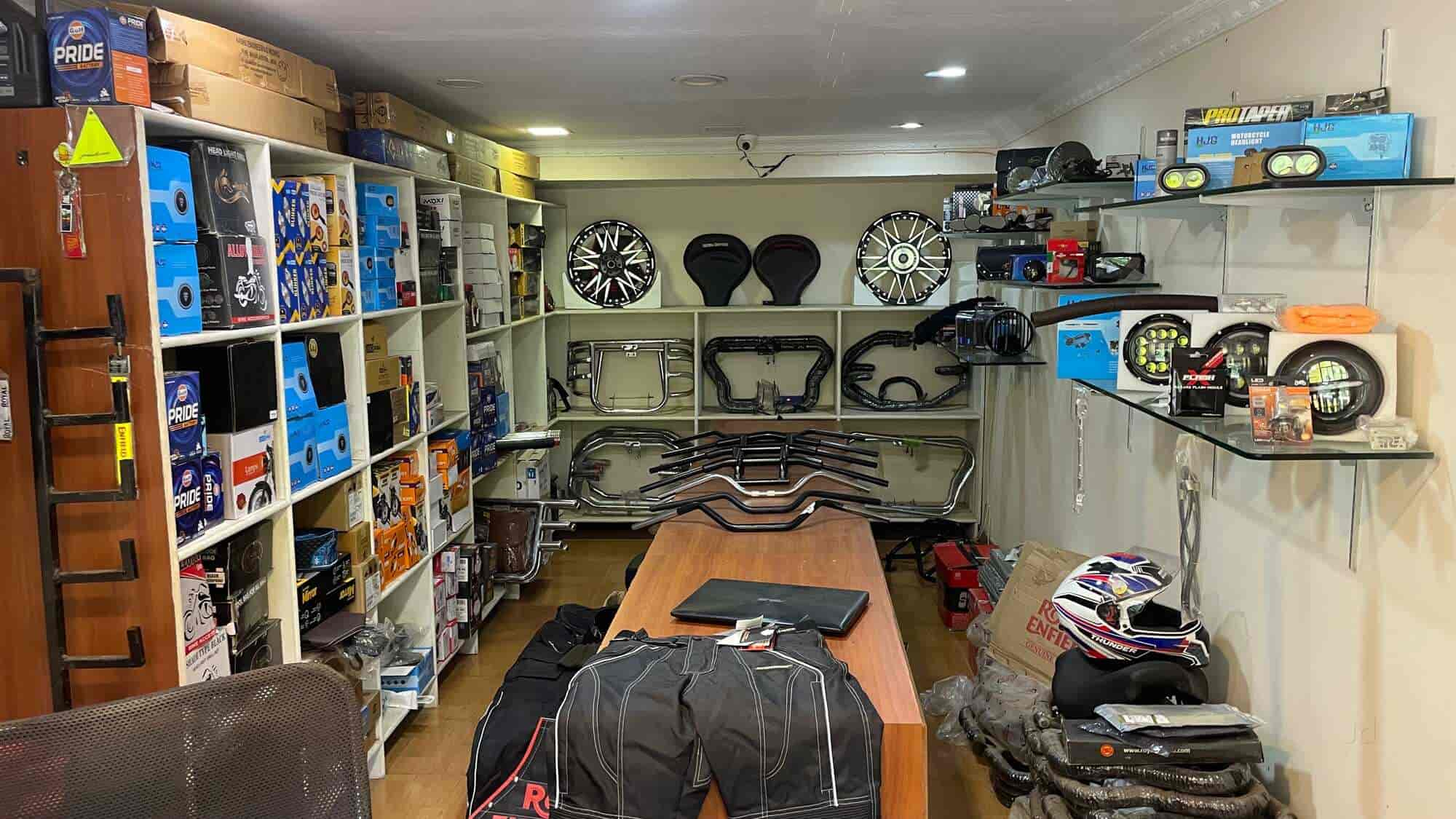Understanding the Crucial Parts of a Motorcycle: A Comprehensive Overview for Lovers
For motorbike enthusiasts looking to raise their riding experience and guarantee their bikes run efficiently, recognizing the essential components of a bike is paramount. Each element, from the engine's intricate functions to the essential function of the stopping systems, not just affects efficiency but also safety and security and convenience. This overview will certainly walk with the basic parts that every biker must know with, enabling informed options in both upkeep and prospective upgrades. As we begin this expedition, one must ask: just how does each part communicate to develop the seamless experience every fanatic looks for?
Engine Components

The camshaft plays an important duty in controlling the timing of the engine's shutoffs, ensuring the exact opening and closing needed for effective gas and air intake, in addition to exhaust expulsion. This timing is vital to keeping optimum engine performance and effectiveness. Additionally, the carburetor or fuel shot system, depending on the motorbike version, is accountable for blending air with gas in the right proportion for combustion.
The cooling system, either air or liquid-based, functions to keep the engine's temperature level within functional restrictions, preventing overheating and making sure long life - moto parts nz. Each element, diligently created and integrated, adds to the seamless operation of the engine, specifying the bike's power result and general efficiency
Transmission System
Essential to the bike's performance, the transmission system guarantees efficient power transfer from the engine to the wheels. This system comprises numerous important elements, including the clutch, transmission, and final drive, each playing an important function in equating the engine's power into movement. The clutch, typically operated by a hand bar, serves to engage and disengage the engine from the transmission, enabling smooth gear modifications and controlled acceleration.
The gearbox, often referred to as the transmission appropriate, has a set of gears that bikers can manually change with to change the bike's speed and torque output. These equipments are organized in a series that allows the bike to increase smoothly and keep optimal engine performance throughout different speeds. The majority of motorbikes utilize a consecutive gearbox, requiring the rider to change gears in a fixed order.
Braking Mechanisms
While understanding the transmission system is vital to taking advantage of a motorcycle's power, similarly crucial is the capability to manage and quit that power effectively, which is where stopping devices enter into play. Brakes are vital for safety and performance, giving the biker with the needed control to browse various terrains and conditions. Usually, motorbikes feature 2 sorts of braking systems: disc brakes and drum brakes.
Disc brakes are much more widespread in modern-day motorcycles because of their superior performance. They include a brake disc, caliper, and pads. When activated, the caliper squeezes the brake pads against the rotating disc, converting kinetic power right into warmth, thus slowing down the wheel. This system offers much better warmth dissipation, regular efficiency, and improved quiting power, especially in wet conditions.
Conversely, drum brakes, though less typical, are still discovered in some motorcycles. They function by pushing brake footwear against the inner surface area of a drum affixed to the wheel. While generally less efficient in warmth dissipation and stopping power, drum brakes are easier and extra economical.
Understanding these stopping systems' subtleties enables cyclists to keep their bikes properly and value the design that makes certain efficient and risk-free quiting.
Suspension and Guiding
Suspension and steering systems are vital parts that significantly affect a bike's handling and ride convenience. The suspension system, containing forks at the front and shock absorbers at the rear, soaks up roadway abnormalities, enhancing security and control. Front forks, inverted or usually telescopic, compress and rebound to alleviate effects, while back shock absorbers keep tire contact with the roadway, critical for traction and safety.
Guiding, centered around the handlebars, links the why not find out more motorcyclist to the motorbike's directional control. The steering head bearings make certain smooth operation, permitting precise ability to move. Appropriate alignment and upkeep of these bearings are vital for predictable guiding reaction and reducing motorcyclist tiredness.
The suspension's adjustability is click here to read one more vital aspect; preload, damping, and rebound setups permit customization to suit various riding designs and conditions. This adaptability is important for maximizing performance, whether navigating metropolitan streets or taking on tough trails. Technologies like digital shock absorber use real-time changes, enhancing adventure high quality throughout diverse terrains.

Electric Systems
After ensuring a smooth and regulated adventure via effective suspension and guiding systems, interest turns to the electrical systems, an essential aspect of modern-day motorcycles. These systems play an essential role not only in beginning the engine but likewise in powering numerous parts that improve the capability and safety of the bike.
At the heart of a motorbike's electrical system is the battery, which stores electric power essential for starting the engine and powering auxiliary systems - motorcycle parts nz. The generator or generator, coupled with the rectifier-regulator, makes certain the battery remains billed while the bike is in operation, transforming power into electric energy and preserving voltage degrees
The ignition system, another crucial component, is in charge of sparking the air-fuel combination in the engine's cylinders. Modern motorbikes commonly utilize an electronic ignition system, using better efficiency and dependability contrasted to typical systems.
Illumination systems, including fronts lights, tail lights, and indications, are also crucial, making certain visibility and security for the motorcyclist. Added electronic elements such as sensing units, control devices, and displays add to sophisticated attributes like gas injection administration, anti-lock stopping systems (ABDOMINAL MUSCLE), and electronic why not find out more control panels, further enhancing the riding experience.
Final Thought
A complete understanding of a bike's essential components, consisting of the engine, transmission system, braking devices, suspension, guiding, and electric systems, is important for fanatics aiming to optimize efficiency, security, and convenience. Proficiency of these aspects permits educated choices relating to maintenance and upgrades, ultimately enhancing the riding experience. By integrating this understanding, bikers can ensure their bikes run at peak effectiveness and integrity, therefore making best use of both satisfaction and long life of their automobiles.
For motorbike lovers looking to elevate their riding experience and guarantee their bikes run efficiently, recognizing the vital components of a bike is critical.Essential to the motorbike's capability, the transmission system makes sure effective power transfer from the engine to the wheels.While comprehending the transmission system is crucial to utilizing a motorcycle's power, similarly crucial is the ability to control and quit that power successfully, which is where stopping devices come into play. Commonly, motorbikes include 2 kinds of braking systems: disc brakes and drum brakes.
A thorough understanding of a motorcycle's important elements, including the engine, transmission system, stopping mechanisms, suspension, steering, and electrical systems, is essential for fanatics intending to maximize performance, convenience, and safety.